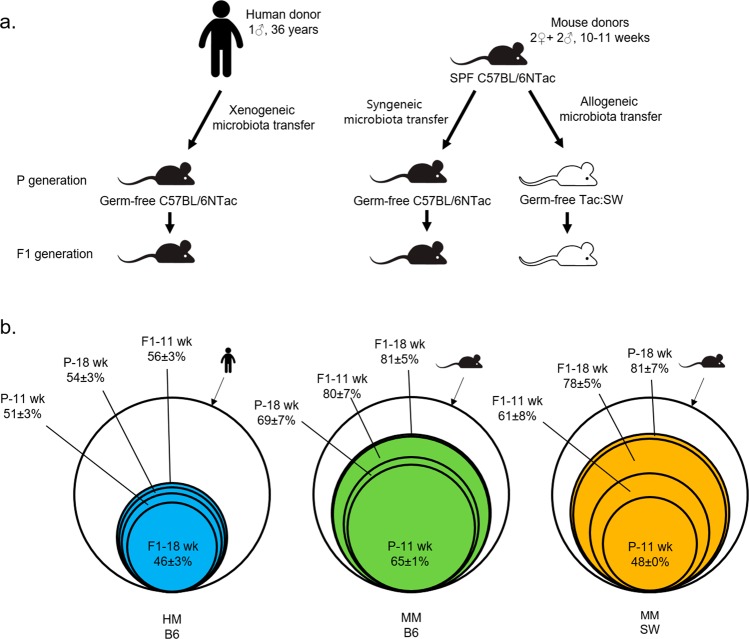Figure 1.
(a) Study design. n = 4♀ (P HM B6/MM B6/MM SW); 8♀, 12♂ (F1 HM B6); 14♀,12♂ (F1 MM B6); and 25♀,19♂ (F1 MM SW) (see Table 1). Germ-free B6 and SW mice were transplanted when six weeks old with HM or B6 MM and housed in gnotobiotic isolators. The transplanted P mice were bred and the offspring (F1) generation born with the microbiota (related to Table 1). (b) Colonization efficiency. The proportion of operational taxonomic units (OTUs) from the human and mouse donor samples that were detected in the recipient P and F1 mice is shown. The outermost non-filled circle represents the donor samples, i.e., 100%. Each smaller circle represents fecal samples sorted generation- and age-wise and with standard deviation. From left to right: HM donor and B6 recipients; B6 MM donor and B6 recipients; B6 MM donor and SW recipients. HM = human microbiota, MM = mouse microbiota, B6 = C57BL/6NTac, SW = Tac:SW (Swiss Webster), P = transplanted parent generation, F1 = offspring generation born with microbiota.

